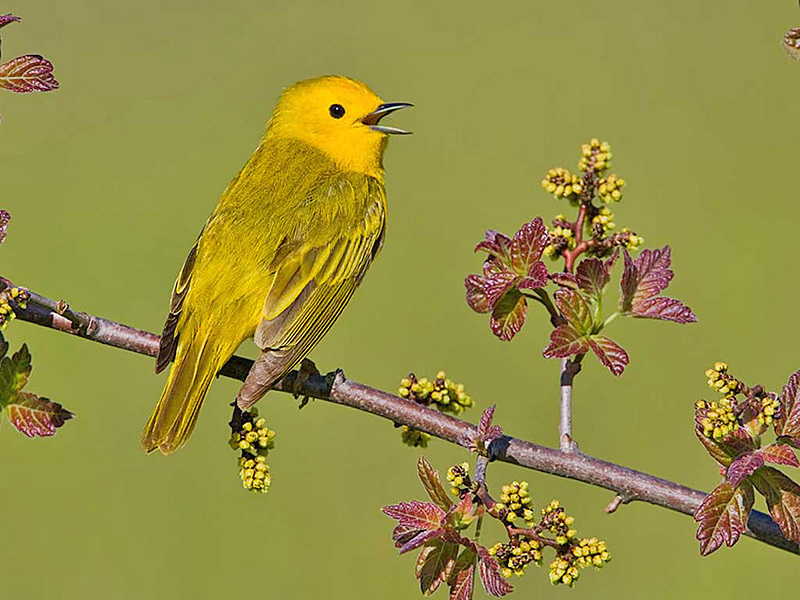The Yellow Warbler is an evenly proportioned small songbird. They have rounded heads, relatively large, straight bills, and medium-length tails.
There are more than 50 species of warblers in North America, but few have the brilliant color and viewing ease that the Yellow Warbler does.
In the summer, males are a buttery yellow color and sing their whistled song from wet thickets, roadsides, and willow across nearly all of North America. Immatures and females are not as bright as the males and lack the rich chestnut streaking. However, they’re still easy to see with their unmarked faces, prominent black eyes, and warm yellow tones.
On this page
Breeding Male
Yellow Warblers are consistently yellow birds. Males are egg-yolk yellow and have reddish streaks on their underparts. Both males and females have yellow patches on the tail. They have large black eyes and unmarked faces.
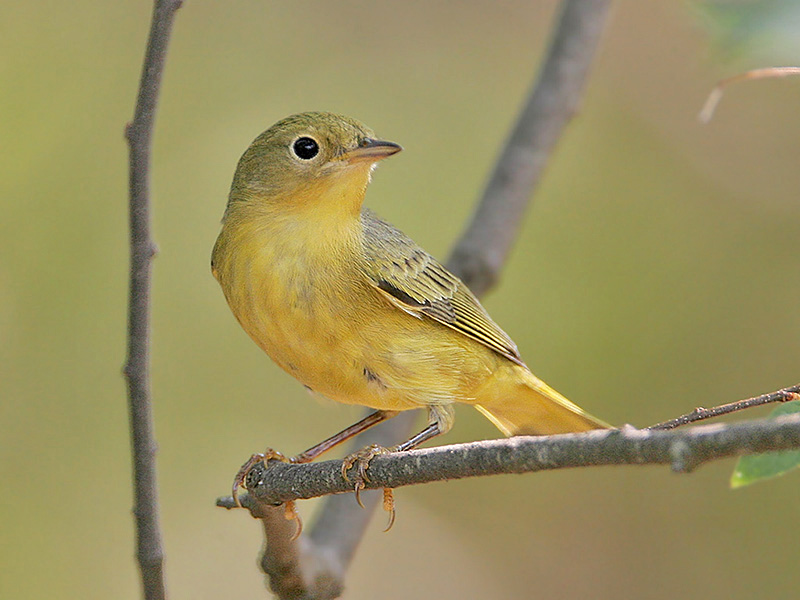
These birds are 4.7 to 5.1 inches (12 to 13 centimeters) long and weigh 0.3 to 0.4 ounces (9 to 11 grams). That makes them slightly larger than an American Goldfinch and about the same size as a Yellow-rumped Warbler.
Female
Female Yellow Warblers look very similar to male Yellow Warblers. However, females are not as yellow as males and don’t have reddish streaks on their underparts.
Instead, they have unstreaked yellow underparts and yellow-green backs. They’re roughly the same size.
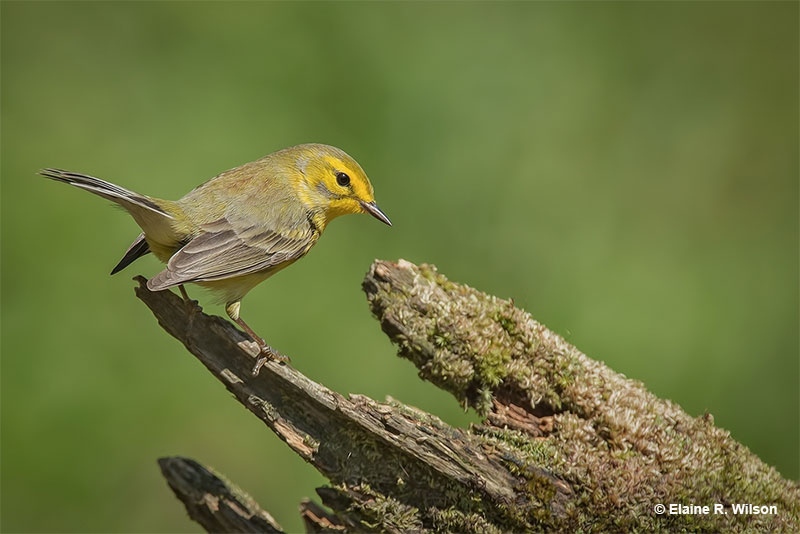
Juvenile
Like the female Yellow Warblers, Immatures are not as yellow as the males and don’t have the reddish streaks on their underparts. It takes 11 to 12 days for Yellow Warblers to hatch. They leave the nest after 8 to 10 days, and their parents will continue to feed them for up to three weeks after they leave the nest.
Yellow Warblers have some regional differences. Some subspecies that live year-round in mangrove forests of Central and South America and the Caribbean have bright chestnut brown over the entire head or on the crown. These subspecies are called “Mangrove” or “Golden” Yellow Warblers.
Habitat
Yellow Warblers inhabit thickets and other regrowing and disturbed habitats during the breeding season. Yellow Warblers prefer to inhabit areas along wetlands and streams.
They usually inhabit willow trees, but they’ve also occupied aspen trees in the Rockies, along the edges of fields in the East, and dwarf birch stands in the tundra. In the Western portions of North America, Yellow Warblers inhabit areas as high as 9,000 feet in elevation.
During the winter months, Yellow Warblers live in dry scrub, mangrove forests, marshes, and lowland forests. However, they’ve occasionally inhabited areas up to 8,500 feet in elevation.
Diet
Yellow Warblers primarily eat insects. These birds pick insects in a variety of ways. Sometimes they capture them in short flights, hover over leaves to pick them from, and grab them from foliage. Insects these birds commonly eat are caterpillars, midges, beetles, wasps, and leafhoppers.
Behavior
Yellow Warblers forage for food along the thin branches of small trees and shrubs. They pick off insects as they go or will occasionally hover to get at prey on the leaves. Males will perch near the tops of trees and bushes in their territory to sing.
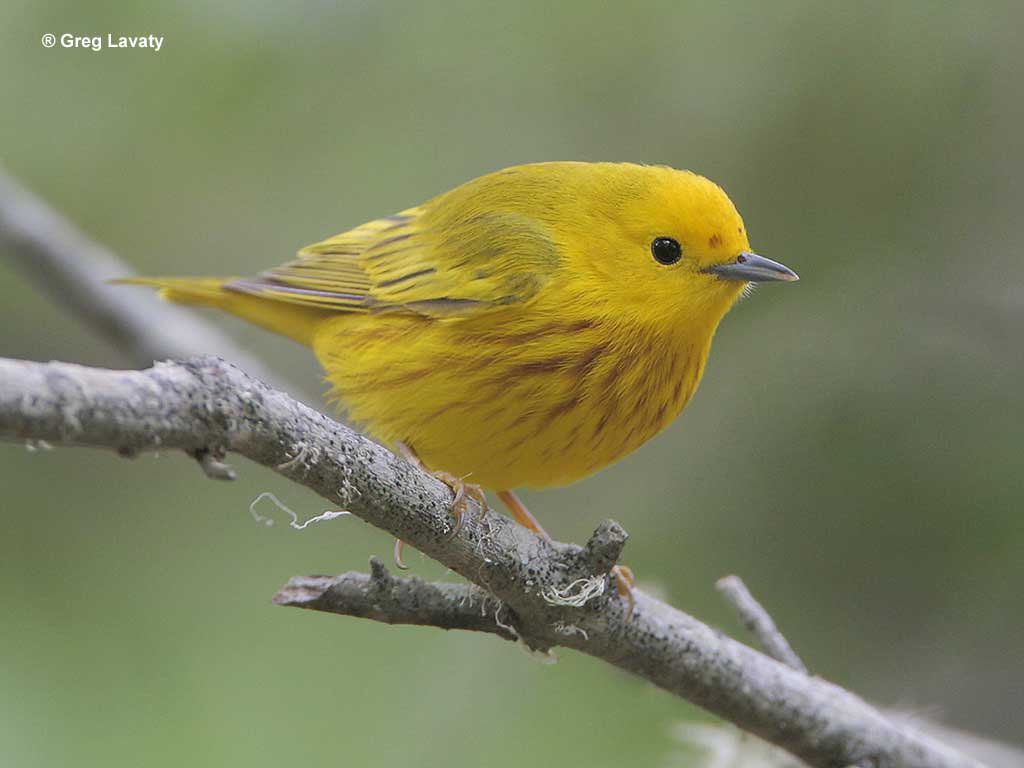
When male Yellow Warblers set up their territories, they may fly toward a neighboring female or male in a semicircular, horizontal path called “circle flight.”
A male Yellow Warbler may also fly slowly with exaggerated, fast wingbeats away from a male he is competing with or a female he is courting. These birds usually form a monogamous pair that sometimes lasts more than one breeding season.
Yellow Warblers will defend their nesting territories from a wide variety of species, including chickadees, other warbler species, House Wrens, Eastern Kingbirds, and blackbirds.
They may even chase off other species of warblers while in their wintering grounds.
Range (and seasonal changes)
Yellow Warblers are long-distance migrants. They breed across the northern and central portions of North America. They spend their winters in northern South America and Central America. Yellow Warblers migrate sooner than most other warbler species.
Like many other songbirds that migrate, Yellow Warblers from eastern portions of North America fly across the Gulf of Mexico in a nonstop journey.
Wing shape
Yellow Warblers have broad wings and a wingspan of 6.3 to 7.9 inches (16 to 20 centimeters).
Fun Facts
- Yellow Warblers symbolize change, new beginnings, and transformation. The spiritual meaning can represent messages from relatives, ones higher self, and the spirit world. Those with a warbler as their spirit animal may need a change in their lives or are receiving a message from the spirit world to pay attention to something important.
- The oldest Yellow Warbler lived to be at least 11 years old. It was a female, and she was recaught in the state of New York and rereleased.
- Brown-headed Cowbirds often parasitize Yellow Warbler nests. Instead of trying to save their eggs, Yellow Warblers will build a new nest directly on top of the parasitized one and lay new eggs.
- Natural predators of Yellow Warblers are squirrels, snakes, raccoons, skunks, weasels, cats, crows, and jays. They’ve even gotten caught in orb weaver spider webs.
Vocalization
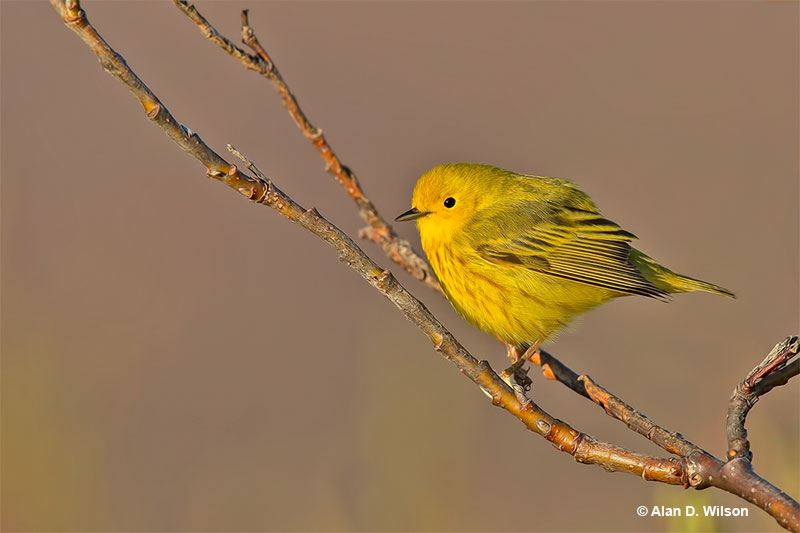
© Alan D. Wilson
Male Yellow Warblers sing a series of 6 to 10 whistled notes that sound sweet. The whistled notes speed up throughout the song and often end on a rising note. Their songs are commonly associated with early summer mornings and spring. These songs usually repeat up to 10 times per minute.
Yellow Warblers also use various short notes; some sound metallic, and others have a buzzing or lisping quality. Male Yellow Warblers sometimes alternate chip notes with their songs. Female Yellow Warblers have responded to songs with a high-pitched chip.
Both males and females use hissing, high notes when defending their territory.
Similar Species
Yellow Warblers are easy to spot thanks to their bright yellow plumage. But there are still some species they can be confused with.
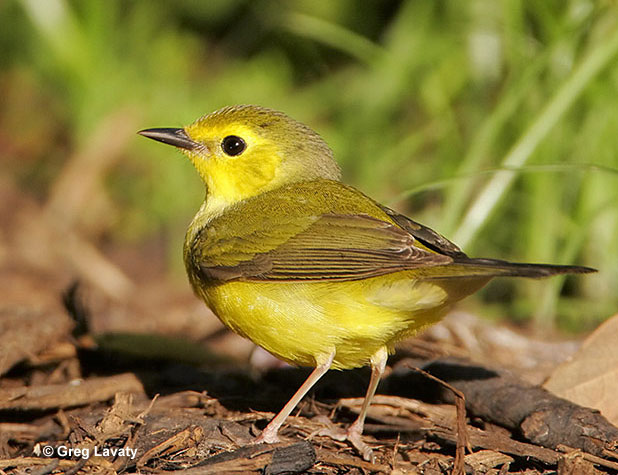
Female Hooded Warbler
For Hooded Warblers, only females can be confused with Yellow Warblers. Male Hooded Warblers have a black hood on their faces and heads.
Yellow Warblers are a bit brighter in color than female Hooded Warblers.
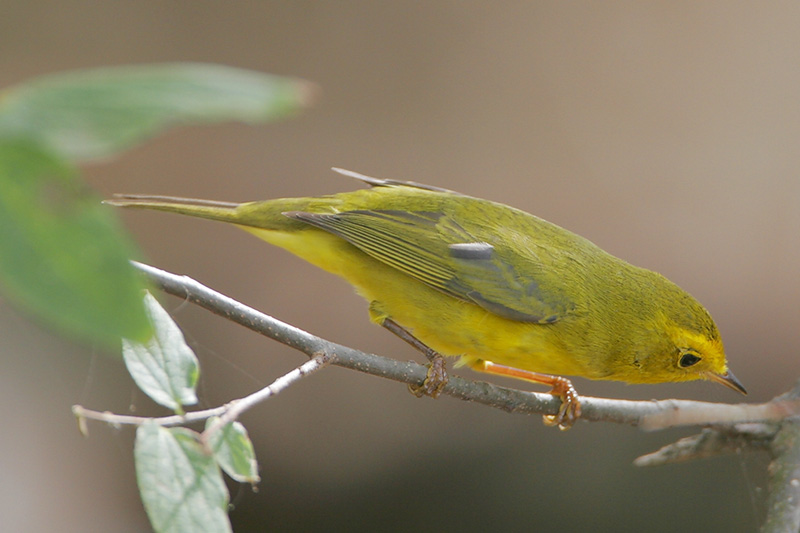
Female Wilson’s Warbler
Female Wilson’s Warblers can be confused with Yellow Warblers as well.
Male Wilson’s Warblers have black caps on their heads, but females look more similar.
Wilson’s Warblers have more brown on their wings and are a tiny bit smaller (yet stockier) than Yellow Warblers.
Frequently Asked Questions
Where do you find Yellow Warblers?
Yellow Warblers inhabit thickets and other regrowing and disturbed habitats during the breeding season. Yellow Warblers prefer to inhabit areas along wetlands and streams. During winter, Yellow Warblers live in dry scrub, mangrove forests, marshes, and lowland forests. However, they’ve occasionally inhabited areas up to 8,500 feet in elevation.
What sound do Yellow Warblers make?
Yellow Warblers sing a series of 6 to 10 whistled notes that sound sweet and various short notes. Some of these quick notes sound metallic, and others have a buzzing or lisping quality.
What time of day are warblers active?
Yellow Warblers are active from Sunrise to Sunset.

